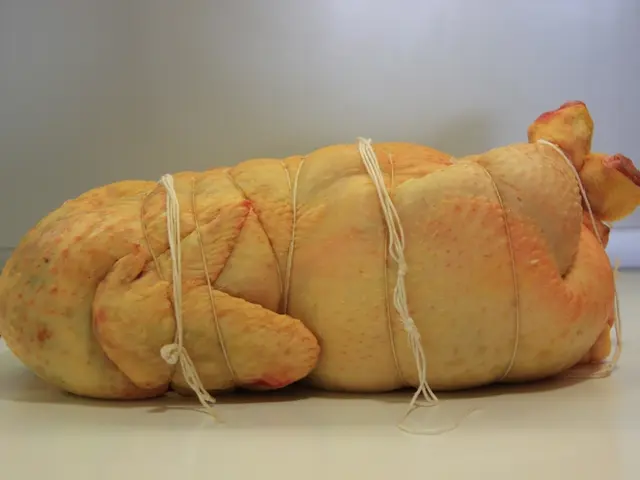Study proposes that controlling appetite could be accomplished through manipulating taste sensitivity, offering a potentially revolutionary approach to reducing overeating.
A groundbreaking discovery by scientists at UC San Francisco has shed light on the intricate workings of brain cells linked to taste buds, revealing their crucial role in appetite control and potential applications for weight loss treatments.
These brain cells, known as prolactin-releasing hormone (PRLH) cells, are stimulated when sensing flavour in the mouth and send two conflicting messages around the brain: one to eat more and one to slow down. This balance between the messages is essential in determining one's appetite level.
When taste buds detect five basic taste modalities - salt, sweet, sour, bitter, and umami - specialized taste receptor cells transduce these chemical signals into electrical signals that activate gustatory neurons. From there, taste information is relayed to brain regions responsible for flavour perception and appetite regulation.
The interaction between PRLH cells and other brain cells, such as CGC cells, is of particular interest in understanding appetite control. While the gut plays a role in suppressing appetite, its signals to CGC cells take tens of minutes to curb appetite, whereas PRLH cells can act in just seconds.
The discovery of PRLH cells' role in appetite control opens up considerations for other components of the appetite-control system. Taste sensitivity, especially to fat and sweet tastes, can influence dietary preferences and long-term weight management. Enhancement of orosensory fat sensitivity post-bariatric surgery corresponds with better weight loss outcomes, indicating that modifying taste perception could be a strategy for obesity treatment.
The new imaging technology developed for the research could potentially be used to better understand weight suppressors like Semaglutide. This technology could help in understanding well-known weight suppressors more thoroughly, leading to the development of weight loss treatments that work better than drugs like Semaglutide.
Dr Zachary Knight, the research team's leader, states that the discovery provides a new framework for understanding appetite control. Dr Truong Ly, the study's lead author, mentions that it was a surprise to find PRLH cells activated by taste perception. The discovery that brain cells linked to tastebuds are the first defense against binge eating is a significant finding in the field of appetite control research.
In summary, brain cells linked to taste buds play a crucial role in detecting food flavors and transmitting these signals to the brain, thereby influencing appetite control. While genetic taste receptor variations show limited direct impact on obesity, modulation of taste perception and the related brain circuits offers promising avenues for novel weight loss treatments and appetite regulation strategies. The new imaging technology developed for the research could potentially be used to better understand these treatments and develop more effective weight loss strategies in the future.
- The groundbreaking research on brain cells linked to taste buds has unveiled their critical role in regulating appetite, potentially paving the way for novel weight loss treatments in the health-and-wellness sector.
- The scientists' findings emphasize the significance of PRLH cells, which are stimulated by flavors in the mouth and send conflicting messages to the brain about eating, with a delicate balance determining one's appetite level.
- In the field of medicine and fitness-and-exercise, the study further highlights the influence of taste sensitivity, particularly in relation to fat and sweet tastes, on dietary preferences and long-term weight management.
- The discovery of PRLH cells' role in appetite control encourages the exploration of other components within the appetite-control system, with potential strategies for obesity treatments revolving around modifying taste perception.
- The new imaging technology developed for the research could be applied to better comprehend weight suppressors like Semaglutide, leading to the development of more effective weight loss treatments that might surpass the capabilities of currently available drugs in the science domain.








